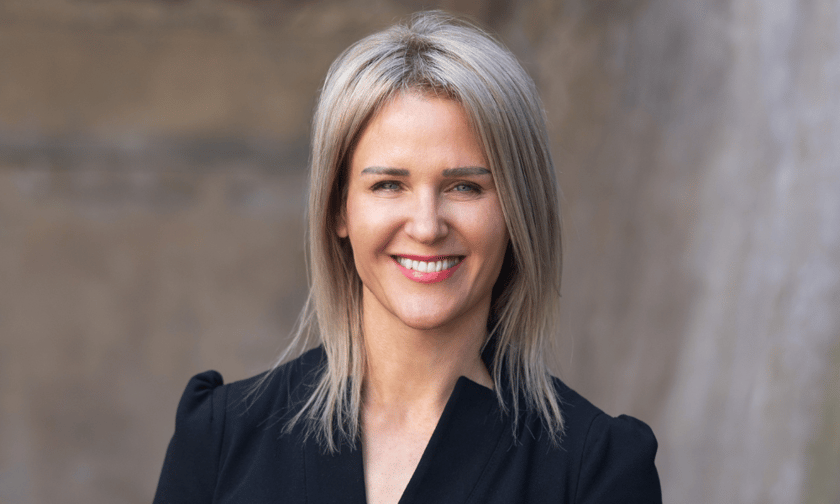Strategies for population surge | Australian Broker News
News
Strategies for population surge
How to accommodate 13 million extra folks by 2072?

ABS forecasted a population enhance of 13 million by 2072, requiring 6.2 million new houses – prompting Nerida Conisbee (pictured above), chief economist at Ray White, to comment, “We are very prone to have a a lot larger Australia.”
Just how will Australia accommodate this extra 13 million folks? Conisbee cited 10 methods.
Melbourne requires most new houses
Melbourne is anticipated to surpass Sydney in measurement by 2037 and would require about 22% of the brand new houses. Sydney and Brisbane are additionally set to see vital housing calls for.
“This in fact might change,” Conisbee stated. “As we noticed through the pandemic, population in Brisbane elevated far faster than Sydney and Melbourne. Over a very long time interval, comparable shifts might happen to different components of the nation.”
Addressing city density
To handle this progress, Australia might want to enhance its city density considerably.
“Globally, Australia is likely one of the least dense nations on the earth, with a really low proportion of high-density housing,” Conisbee stated. “As our population will increase, it should change into far dearer to proceed to supply infrastructure to such a extensively unfold population.”
Solving the lacking center
The “lacking center” – medium-density housing in suburban areas – is seen as a important space for growth. Conisbee burdened the significance of increasing housing sorts like townhouses and bigger residences to satisfy various wants, saying, “Not everybody needs to reside in very high-density areas, or removed from town.”
Increasing variety of renters
The demographic shift towards extra renters, significantly amongst Millennials, signifies a necessity for extra rental properties.
“More individuals are renting and renting for longer,” Conisbee stated, suggesting a shift in how rental properties are owned and managed, significantly by way of establishments slightly than non-public landlords.
Expanding variety in rental possession
In Australia, most rental housing is provided by non-public traders. As the demand for leases grows with the population, diversifying possession sources turns into essential. Government-owned leases have declined for many years, shifting focus to institutional possession. The Build to Rent sector, although at the moment small, is about to broaden considerably.
Shift in direction of smaller households
Australia’s common family measurement has decreased from 3.1 to 2.5 folks over fifty years.
“During the pandemic, we noticed that given the chance, many individuals favor to reside alone and there was a spike in single particular person households,” Conisbee stated. “Since then, rental will increase have pressured extra folks again to sharing.”
Despite rising rental prices encouraging shared dwelling, the development towards single-person households is anticipated to persist, influenced by an ageing population and longer lifespans. This shift challenges the dominance of enormous household houses.
Government’s function in boosting housing provide
The authorities has traditionally struggled with direct dwelling provision, because the inventory of presidency leases has constantly declined.
Effective help now includes adjusting planning controls to extend density in low-density suburbs and revising tax insurance policies. While damaging gearing has saved rents inexpensive, stronger measures are wanted to extend housing building.
Tax incentives for institutional traders and international patrons might entice further capital, facilitating extra dwelling growth. This method has confirmed efficient up to now, notably over the last decade’s report housing building, Conisbee stated.
Increased stress on downsizers
The stress on older Australians to downsize is rising, but applicable housing choices are missing. Sustainable dwelling design can also be turning into a precedence, pushed by price financial savings and luxury as a lot as environmental issues.
Greener houses and sustainable design
Cost financial savings and luxury are driving the adoption of energy-efficient and sustainable dwelling designs, particularly as vitality costs rise.
New rules now implement particular vitality effectivity and sustainability requirements in dwelling building and renovations.
Market traits additionally replicate a rise in property listings highlighting energy-efficient options, showcasing their enchantment within the housing market.
Utilising vacant properties
With roughly 10% of houses vacant, there’s growing stress to make higher use of those properties, particularly in sought-after areas. Measures just like the Victorian authorities’s vacant property tax are aimed toward addressing this situation.
This complete method, combining governmental motion, market adaptation, and modifications in public conduct, is important to organize for Australia’s future housing wants, Conisbee stated.
To learn the Ray White article in full, click on right here.
Get the most popular and freshest mortgage information delivered proper into your inbox. Subscribe now to our FREE every day e-newsletter.
Related Stories
Keep up with the newest information and occasions
Join our mailing checklist, it’s free!






